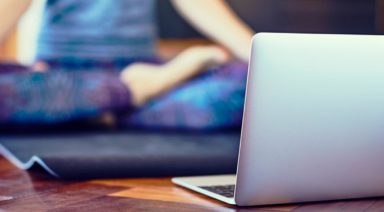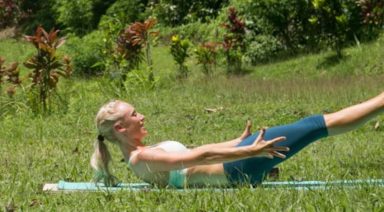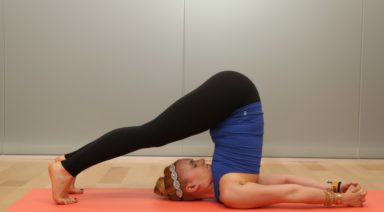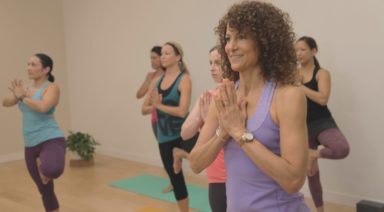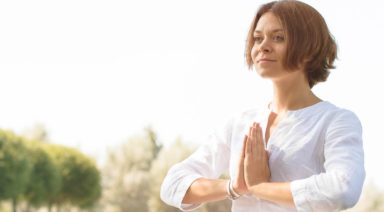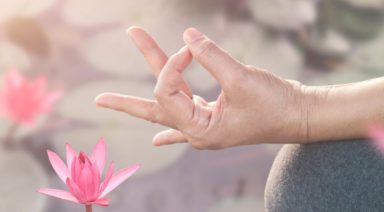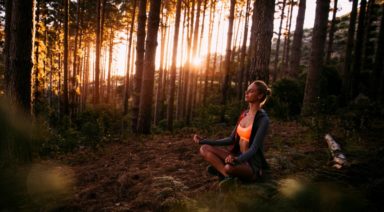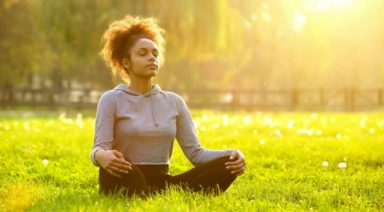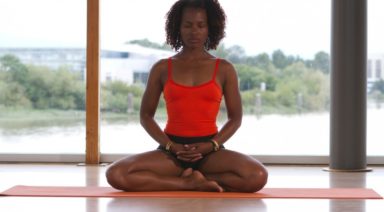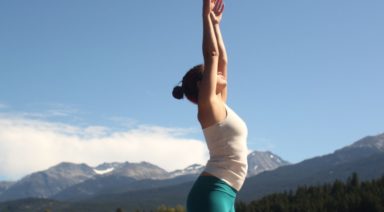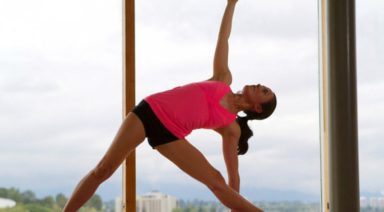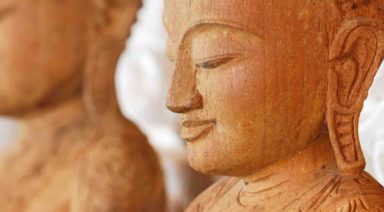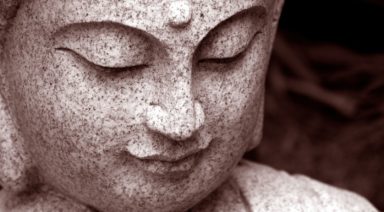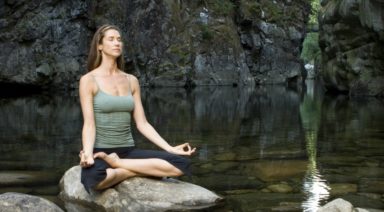Finding the Right Yoga Class for Right Now: A Guide to Feeling Good Today
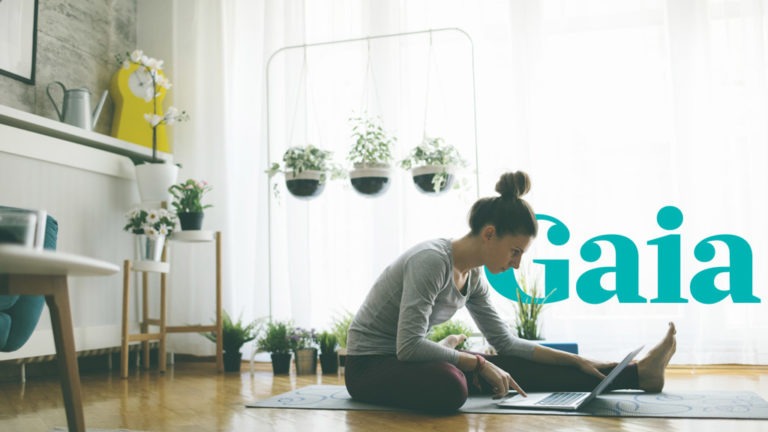
As a yoga teacher, student, and all around believer of the power of yoga, I’ve invited my fair share of people to classes over the years. Regardless if the class is at a studio, in my living room, or outside at the park with kids playing nearby, there’s one thing I’ve come to expect: excuses. For so many people, there’s always some sort of reason to not practice yoga – sometimes to not even try it.
While I understand that time is short and each day is different, I’ve also practiced yoga long enough to know that no matter how you’re feeling, or how much (or little) time you have, yoga will always – always – make you feel better.
There’s no one perfect type of yoga. There’s also no one perfect type of yoga student. With a practice that has been around for centuries, it has come across enough people to learn how to adapt. In fact, if there’s one thing that yoga is – it’s flexible. Thankfully, you don’t have to be…or at least not physically. The only requirement for enjoying a yoga class is having an open mind and a flexible way of thinking, especially if you’re trying something new.
And, of course, you need to know how to find the right class.
Questions to Consider
For all of the woes technology brings, one of its biggest boons is the fact that you have access to literally everything you need exactly when you need it – including a great yoga class.
Like anything in life, in order to get the results you want, you have to know what you want. When you start looking for the right yoga class online, you have to start with an understanding of where you are right now and where you want to end up. Being really honest with this is the best way to learn how to fall in love with yoga. As I begin searching for the class I want to practice, I’ll ask myself a few questions to check in with where I am and what I need:
- How much time do I have?
- How much time can I make?
- When is it the easiest to practice?
- When do I need to practice the most?
- How do I feel right now?
- How do I want to feel when I finish?
Thankfully, the best online yoga studios and libraries have recognized the benefit of finding just the right class, which is why they have a variety of filters and categories that you can select for your search. A lot of days, I use these filters almost as I would a deck of tarot cards: Take a moment to shuffle and tap and then see what shows up.
A few scrolls later, I’m on my mat, in my class, enjoying something that feels like it was made just for me. (Note: It’s wonderful.)
What Feels Right for You?
When I’m helping a friend or student get started with their online practice, I usually point them in the direction of a selection of my favorite categories and let them know what they can expect from them. In time, these categories become like your favorite studio – there when you need them and with those special teachers you love dearly.
Morning Yoga
There’s rarely a better time to practice than first thing in the morning. Not only is this where time seems to be the most flexible (it’s just a matter of getting in the habit of waking up and getting up), but traditionally there are a lot of energetic and spiritual benefits that come from practicing with the rising sun. Case in point: the known-by-almost-everyone sun salutation. Morning yoga classes will greet you sweetly and then wake your body up from head to toe. Knowing that you’re just getting out of bed, teachers create classes that are gentle with the body, giving you time to warm up before getting your body moving. The intentions set in morning yoga classes help you create a container for your day, giving you the sense of balance and steadiness you need to move forward gracefully, confidently, and purposefully.
Energy
Yoga for energy style classes are another great way to start your day, but they aren’t just geared for mornings. I find energy classes particularly helpful for when you hit that mid-day wall. While some of these classes are the “regular” studio class length (60 minutes), there are several energy options that will be shorter, making them a great go-to practice for lunch breaks and bridging that gap between one part of your day to the next (i.e. from work to home, from home to school, from having the house to yourself to welcoming home family, etc.) Basically, when you think you could use a cappuccino, try reaching for one of these yoga classes.
Stress Relief
Who couldn’t benefit from a stress relief yoga class? Just the simple act of participating in daily life is stressful, especially when you add the constant inundation of technology. Stress relief classes are a great choice before you go to bed or after you finish a day of work (that includes the work stay-at-home parents do, too!) I have a few short stress relief classes saved to my library so that I can easily get to them the moment I start to feel my breath shortening, my shoulders creeping up towards my ears, and that all-too-familiar clenching that happens in my jaw when I’m feeling irritated.
Flexibility
While trying to “achieve” flexibility is never the goal, improving your body’s physical flexibility can help keep you comfortable and healthy – for decades. Yoga classes designed for flexibility will meet you where you are and help you find ways to lengthen the muscles in your body. Choosing a class for flexibility is a lot like choosing food that’s healthy – you can’t go wrong. If you know specifically that there’s an area in your body that’s tight, search for a class that’s geared to address that particular muscle or area. You’ll be surprised how much better you feel – especially if you return to a few of your favorite practices again and again.
Back Discomfort
Like stress, there are few people who haven’t experienced back pain in their life. And, for many people, back pain isn’t just a one-time occurrence, it’s chronic and frustrating. While some back pain is caused by an actual singular event, the majority of back discomfort is caused by years of tight muscles, stress, and bad posture. Yoga classes for back health will help relieve the discomfort you’re experiencing while also strengthening the muscles in your body necessary to help prevent some of the discomforts with time.
Instead of thinking about the class you “should” practice, get in the habit of finding the class you really need. Once you learn this lesson, a whole new world of yoga opens up for you – and it’s awesome.
3 Ways to Cultivate and Keep a Home Yoga Practice

Starting a home practice can be a daunting task. When I talk to students about starting a home practice, the same topics keep coming up: They don’t have the space or the time, they’ve tried but can’t stick with it or when they try, they don’t end up doing the type of practice they would like to. A home practice can teach you to follow your intuition and how to listen to your body. It will teach you to make time for yourself and it will allow you to reap the benefits daily practice can bring.
Below are my top three tips for starting and keeping, a home practice:
1. Keep a journal, calendar, or both.
Why? It keeps you accountable. By writing on your calendar that you are practicing that night, you’ll motivate yourself to practice so as to avoid staring at your missed commitment the following day. A missed practice can be a big kick in the pants.
I keep my journal on a shelf in my home practice space. When I was working on incorporating consistent practice into my life, having the journal there always got me to go to my practice area, even if I had told myself I didn’t have time, or was too tired to practice. No matter what, I could always convince myself that I had time to jot down what I was feeling in my journal. After a few instances of writing but not practicing, it started to feel ridiculous to be there and not practice. One new habit fed the other.
I have both a calendar and a health journal. I check my practice off on my calendar when I’ve completed it, and I write in the journal even if I don’t do a practice. Both keep me accountable and motivated.
2. Release your expectations. All of them.
Don’t worry about having the “perfect” space to practice. Don’t worry about how much time you were able to spend on your practice on any given day, and definitely don’t worry about the kind of practice you decide to do. Find a spot that’s big enough to roll out your mat and start there. If it helps, you can set up a special space where you can keep your yoga stuff. Try setting up an alter, but don’t let an imagined need for such a space keep you from starting your practice today. All you need is one space that is big enough to lay out a yoga mat. Period.
One of the issues I faced when I was starting my home practice was making the time. It seemed like a rare occasion when I had enough time to do what I would consider to be a practice; however, once I got serious about starting a home practice, this was one of the first beliefs that I had to let go off. Some nights I come to the mat exhausted and my practice is savasana, and only savasana. Whether you practice one pose or fifty, it doesn’t matter. I don’t judge and I don’t talk down to myself as though it wasn’t enough. I don’t wish I’d done “more.” I come to the mat with the time I have and I do what works for me on that day.
This goes for the type of practice too. When I started my home practice, I had this idea in my head that my mornings would be set aside for restorative and that I would rock a vinyasa flow in the evenings. I soon learned that I had to let go of what I thought I should be doing and just do what my body told me to do. If that meant doing restorative, I did restorative. If I felt energized, I did a flow. The same rules as above apply.
Don’t judge it, and don’t think it doesn’t count just because it didn’t meet an expectation you had set out for yourself. If you do, you’ll risk getting caught up in the downward spiral of feeling like you aren’t “really” doing a home practice, and once you’re there, it’s very easy to continue with those thoughts and eventually decide that your excuses and downfalls are more powerful than your wish to practice at home. This is where a lot of us end up. Don’t give up on yourself. Persevere through these thoughts.



